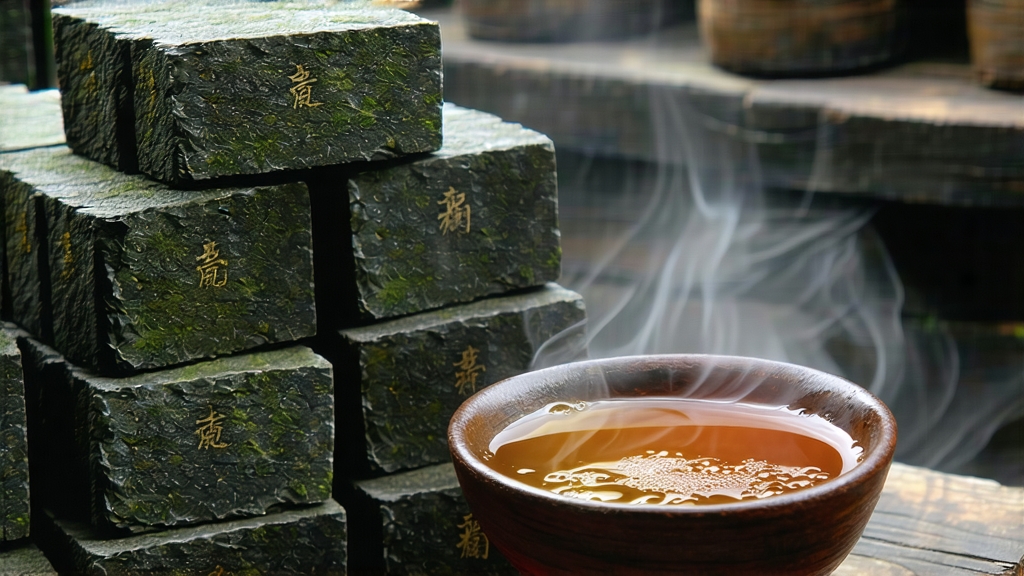
Tucked away in the southern folds of China’s Guangxi Zhuang Autonomous Region, Liu Bao cha—literally “Six Forts” tea—has spent four centuries quietly perfecting the art of getting better with age. To most outsiders the word “dark tea” conjures images of Yunnan’s Pu-erh, yet Liu Bao is the older, subtler sibling that once fueled the caravans of the legendary Tea Horse Road. Its leaves, coaxed by steam, humidity and time, develop a depth that bridges the mineral bite of a Bordeaux and the earthy comfort of a forest floor after rain. This article invites the global tea traveler to discover why Liu Bao was the preferred breakfast of dockworkers in 19th-century Hong Kong, how it ferments inside tall bamboo baskets, and the ritual through which a single 5-gram tuo can yield a dozen infusions, each revealing a different season of its long life.
Historical footprints
The earliest written record appears in the 1661 county annals of Cangwu, where magistrates listed Liu Bao among tribute teas reserved for the Qing imperial court. From the walled villages of the Liu Bao district, porters carried the tea by shoulder pole down the Gui River to Wuzhou, then by junk to Guangzhou and eventually London’s docks. By 1850 it was the cornerstone of the “coolie trade”—compressed bricks used as ballast in clipper ships returning with opium—earning it the nickname “sailor’s gold.” When British planters later smuggled tea plants to Assam and Ceylon, they carried Liu Bao spores in the humid holds, inadvertently seeding the microbial families that still inhabit those gardens today. Thus Liu Bao is not merely a beverage; it is a living archive of maritime globalization.
Micro-terroirs within one county
Liu Bao township sits at 23°N, 600–800 m above sea level, where red lateritic soil is laced with quartz and manganese. Within a 15-km radius three micro-terroirs diverge. The eastern slopes, cooled by monsoon clouds, give slow-growing leaves rich in amino acids, yielding a sweet, orchid-like liquor. The western valleys, hotter and more humid, push the plants to produce polyphenols that translate into a darker, tarry cup reminiscent of blackstrap molasses. Finally, the high ridge villages—Dazhushan and Heishan—harvest old-growth trees (up to 300 years) whose roots dive into mineral veins, imparting a cooling camphor note that lingers on the breath. Connoisseurs speak of “three rivers, six flavors,” mapping each village to a compass point of taste.
From leaf to basket: the craft
Plucking begins in late April when two leaves and a bud reach 45 mm. The picked leaf is wilted on bamboo trays for three hours, then wok-fired at 180 °C for eight minutes to arrest oxidation. What follows is the signature “wet-pile” fermentation: leaves are piled 70 cm high, sprayed with mountain spring water, and covered with jute sacks. Indigenous microbes—primarily Aspergillus niger, Blastobotrys adeninivorans and a local yeast Pichia wickerhamii—ferment the pile for 25–35 days, turning the leaves a dark olive. Masters gauge readiness by aroma: the scent must shift from sour compost to dried longan with a hint of betel nut. The tea is then steamed, pressed into 40 kg bamboo baskets lined with wild banana leaves, and moved to humid caves or climate-controlled warehouses where it ages for a minimum of three years, often twenty. During aging the baskets are rotated quarterly so that every leaf breathes equally, a practice known as “turning the dragon.”
The chemistry of time
Aging Liu Bao is enzymatic alchemy. Over decades, gallic acid rises ten-fold, giving the liquor its silky astringency, while theabrownins polymerize into particles large enough to scatter light, creating the characteristic ruby-gold halo. Microbial enzymes convert caffeine into the milder stimulant theacrine, explaining why even a 1950s vintage can be drunk at midnight without insomnia. Most intriguing is the formation of 1,8-cineole—the same molecule that lends eucalyptus its coolness—produced by slow oxidation of β